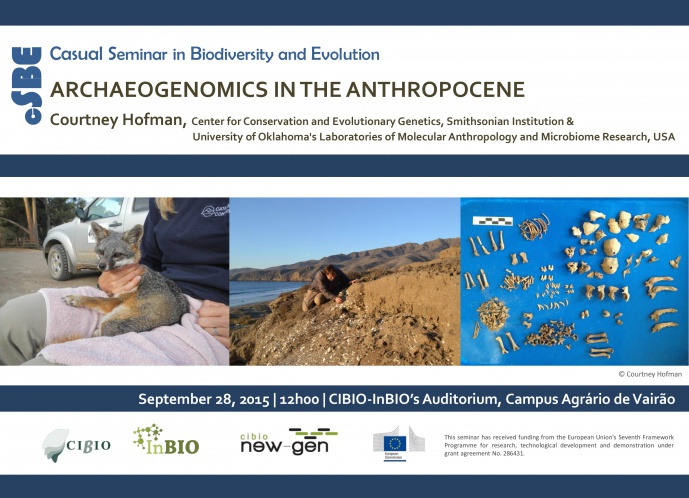ARCHAEOGENOMICS IN THE ANTHROPOCENE

CASUAL SEMINAR IN BIODIVERSITY AND EVOLUTION

While the starting date of the Anthropocene is debated, humans have clearly transformed earth’s ecosystems. Archaeological data sets are an underutilized resource for investigating these impacts and can tell us about demographic and distributional changes, extinctions, translocations, and disease ecology on a number of timescales. When integrated with the recent advances in sequencing technology and capture methods, we can advance the types of questions that can be addressed with this archaeogenomic approach. Case studies from the California Channel Islands and Alaska will highlight the utility of archaeogenomic data and how it can inform decisions to protect, preserve, and restore biodiversity in the future.
Courtney Hofman’s research focuses on developing genomic technologies to answer questions regarding human-environmental interactions through time. Dr. Hofman’s recent work examines how ancient people influenced island ecosystems through the introduction of foxes, mice, and possibly other mammals to the California Channel Islands. She is now investigating human-environment interactions on a microscopic scale by conducting metagenomic analyses of the human oral microbiome using ancient dental calculus.
[Hosts: James Harris and Kevin Mulder, Applied Phylogenetics]
Image credits: Courtney Hofman
